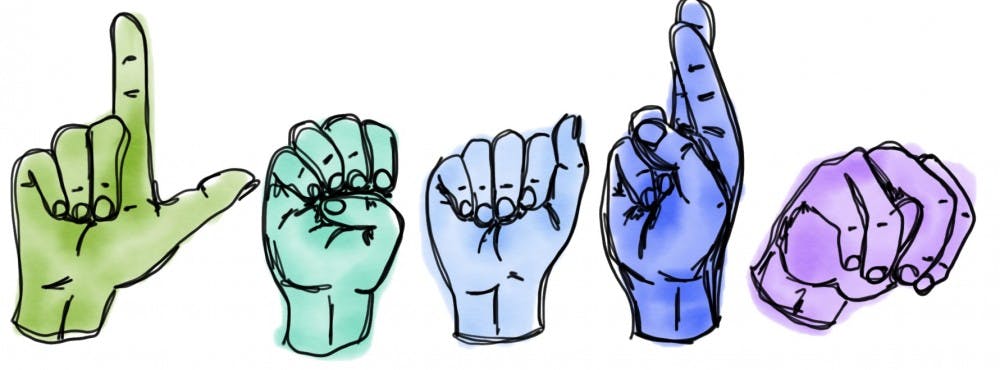Currently, about 70 million deaf people around the world use sign language as their primary form of communication. Of those 70 million, one million are Americans.
Although there is such a large group of deaf Americans who primarily use American Sign Language, there is little education about this language taught in schools.
That needs to change.
A study conducted at Pennsylvania State University shows younger kids have an easier time learning a second language due to their brain’s ability to absorb new information at a subconscious level.
As we age, we have to retain information more consciously, which can be difficult.
Schools like the International School of Indiana are offering French or Spanish in their curriculum as early as kindergarten in hopes of producing more bilingual people and thus greater skills for communication.
Although learning any second language is crucial to breaking down cultural barriers, we need to also consider how important it is to be able to communicate with the deaf community.
Deaf Americans should not have to worry about bringing a pen and paper when they’re out and about. Basic sign language should be taught from as early an age as possible.
I personally have worked in the service industry for almost six years and have encountered situations with deaf customers where they would have to resort to writing in order to communicate.
Thankfully, I grew up in a family where using basic sign language was a part of my upbringing. Without any form of effort on my behalf, I retained the vocabulary I learned as a toddler.
Adding to my vocabulary now, although a conscious effort, is much easier because of my background and familiarity with the language.
After using my limited knowledge of American Sign Language to communicate with these customers, they expressed gratitude for the help in communication. I wish it did not have to be such a barrier for everyone.
After watching the lengths that Americans who are deaf and hard-of-hearing have to go to just to participate in a society that hearing people do not make accessible, it’s easy to agree that American Sign Language should be part of the early education process.
This is also easier than ever before thanks to the internet, where there are hundreds of resources to use, from alphabet diagrams to visual dictionaries. For example, Lifeprint is a website that offers self-study materials to aid in learning American Sign Language, at no cost to the user.
But for those without access to the internet or the time to learn sign language, public education is the best, if not only, chance to learn languages.
Accessibility is long overdue for Americans who are deaf or hard of hearing, and this is the starting point from which we can all improve, and eventually break down, language barriers.






